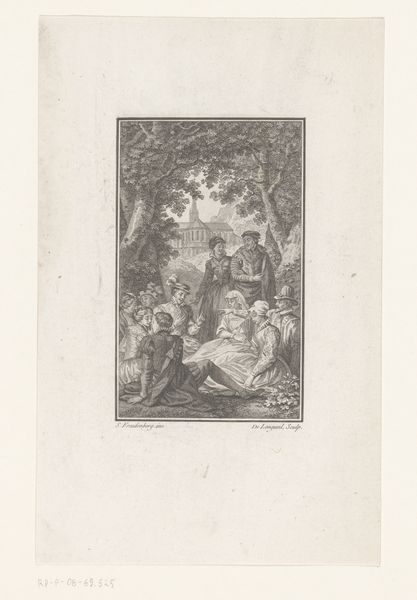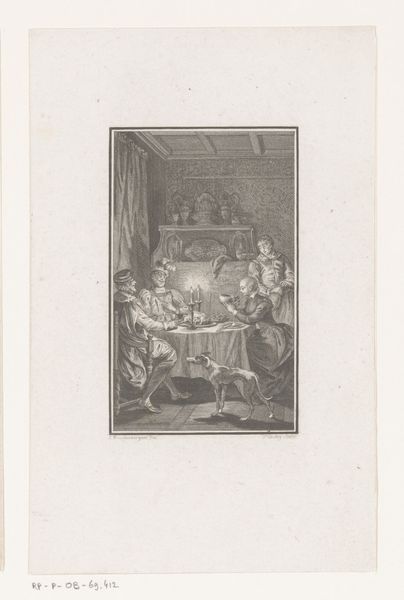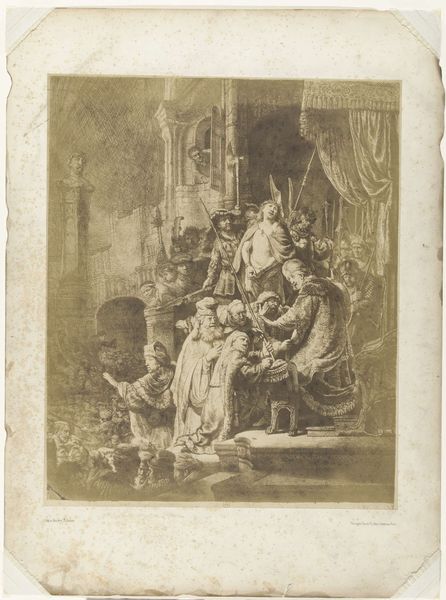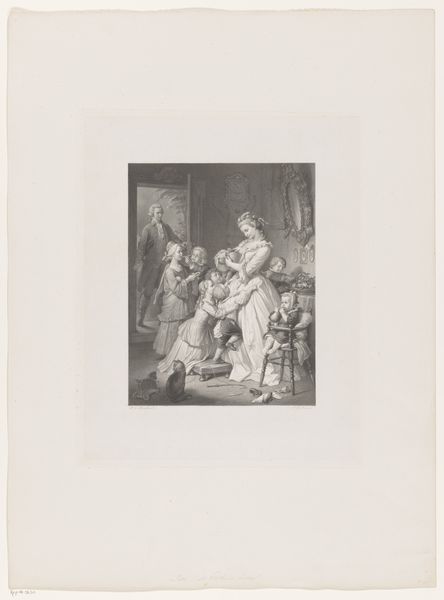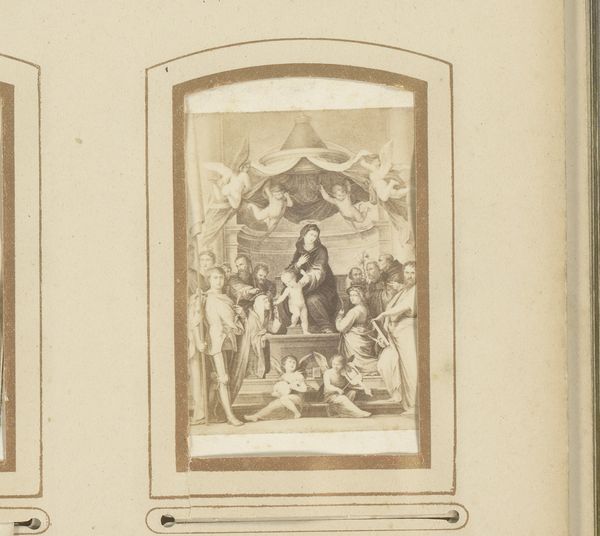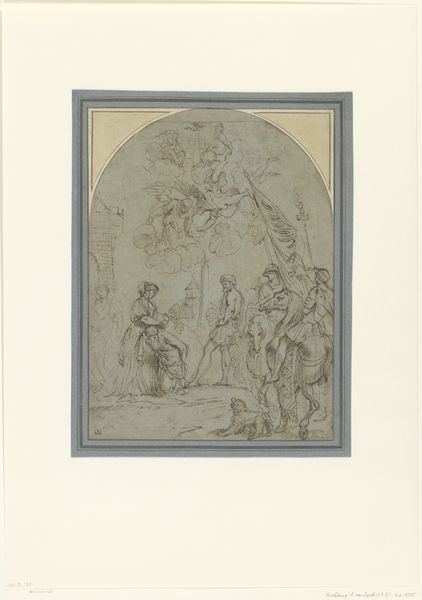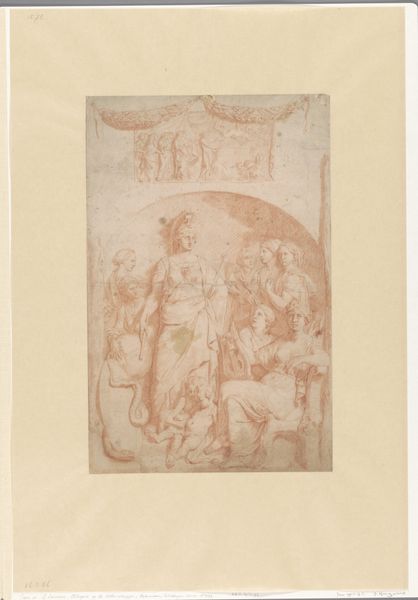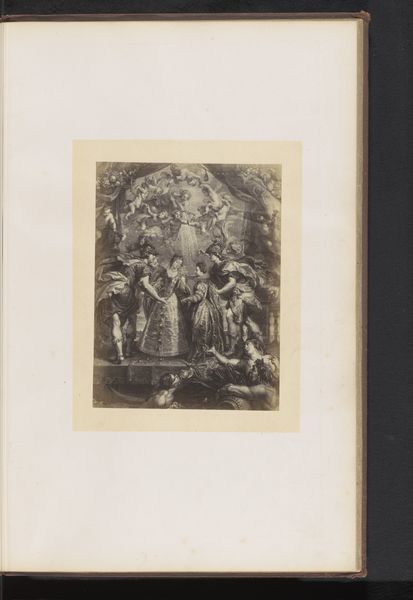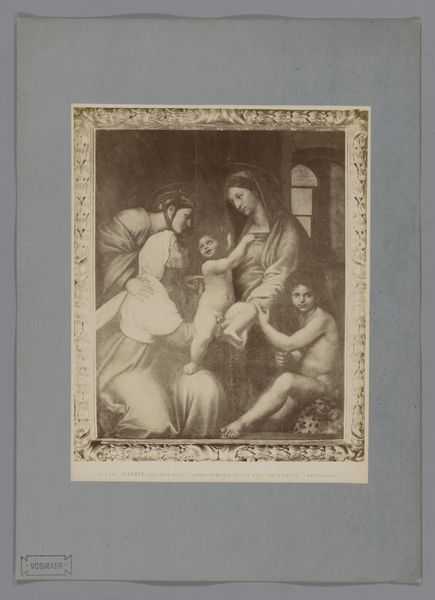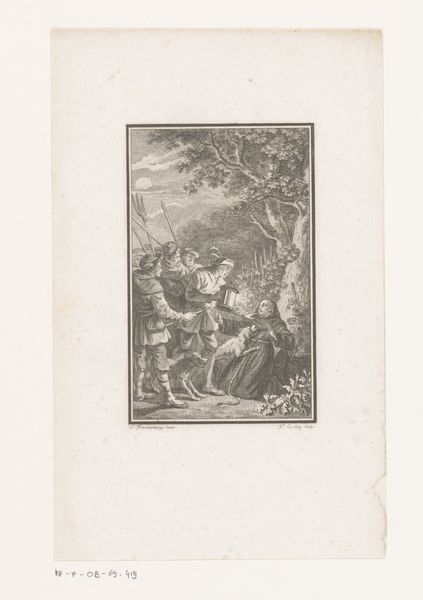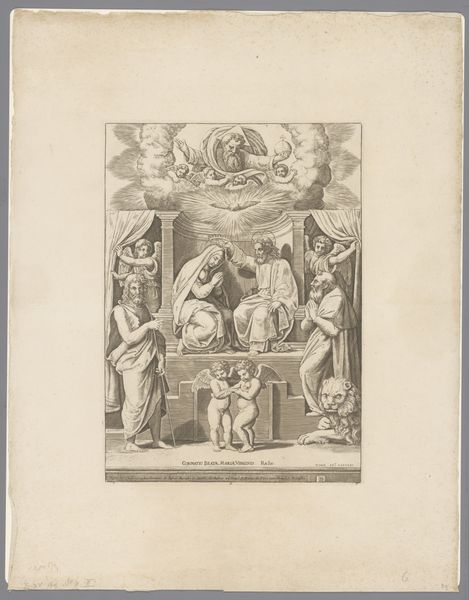
Fotoreproductie van het schilderij Madonna del Baldacchino door Rafaël in de Galleria Pitti te Florence 1852 - 1890
0:00
0:00
print, photography
#
portrait
# print
#
photography
#
academic-art
#
italian-renaissance
Dimensions: height 250 mm, width 192 mm, height 356 mm, width 256 mm
Copyright: Rijks Museum: Open Domain
Curator: Here we have a photomechanical print made between 1852 and 1890 by Fratelli Alinari, representing Raphael’s "Madonna del Baldacchino" originally housed in the Galleria Pitti, Florence. Editor: The tonality creates a dreamy, sepia atmosphere. The figures are strikingly posed, aren't they? Like a meticulously arranged stage play, it's as if each gaze and gesture contributes to a larger symbolic narrative. Curator: Precisely! This print captures the iconic symbolism of the Madonna enthroned, with flanking saints as intercessors, arranged beneath a grand architectural baldachin. The cupids introduce an element of levity—disrupting an otherwise severe pictorial plane with a natural human tenderness. The implied lines converging toward the Madonna emphasize the central theme: divine maternity. Editor: And how cleverly Raphael uses familiar iconographic codes! Mary, seated, presents Jesus—an eternal symbol of salvation and hope. Note also the significance of the baldachin. The semiotics of religious authority and protection couldn’t be clearer, yet how the play of light models a striking relief of the folds of cloth which, with some distance, lose clear representation. The effect borders abstraction and pulls away from pure illustration. Curator: Beyond the central figures, observe the balance and formal symmetry. The arrangement suggests a kind of pyramidal structure with Madonna at its apex, balanced by flanking figures of various degrees of authority. There’s an interplay of depth and dimension, a play with surface tension enhanced, not lessened, by its photo-reproduction. Editor: True, and perhaps its cultural memory sustains it even more now. Even mediated as a photo, we recall not just its religious context, but its repeated invocation throughout the ages, acting as a familiar, consoling narrative in uncertain times. I think people derive assurance from these historical references— a visual form of cultural grounding. Curator: It seems clear, doesn’t it? This piece is effective for both its religious storytelling and artful composition. Thank you. Editor: Absolutely. A poignant illustration of symbolism’s persistent relevance and its intersection with the fundamentals of formal artistic structure.
Comments
No comments
Be the first to comment and join the conversation on the ultimate creative platform.
